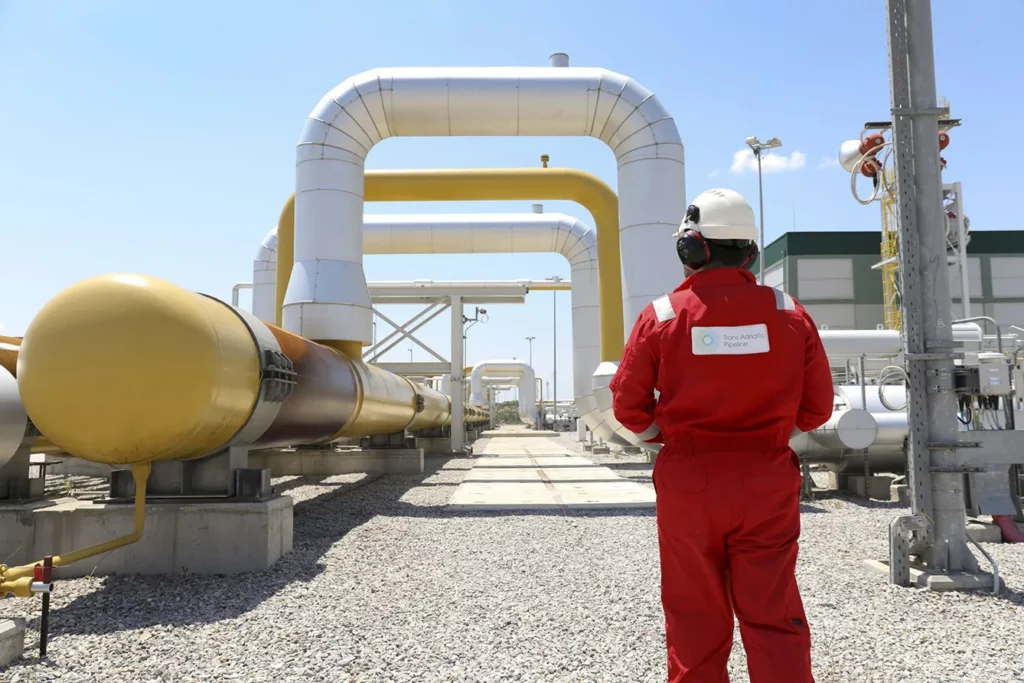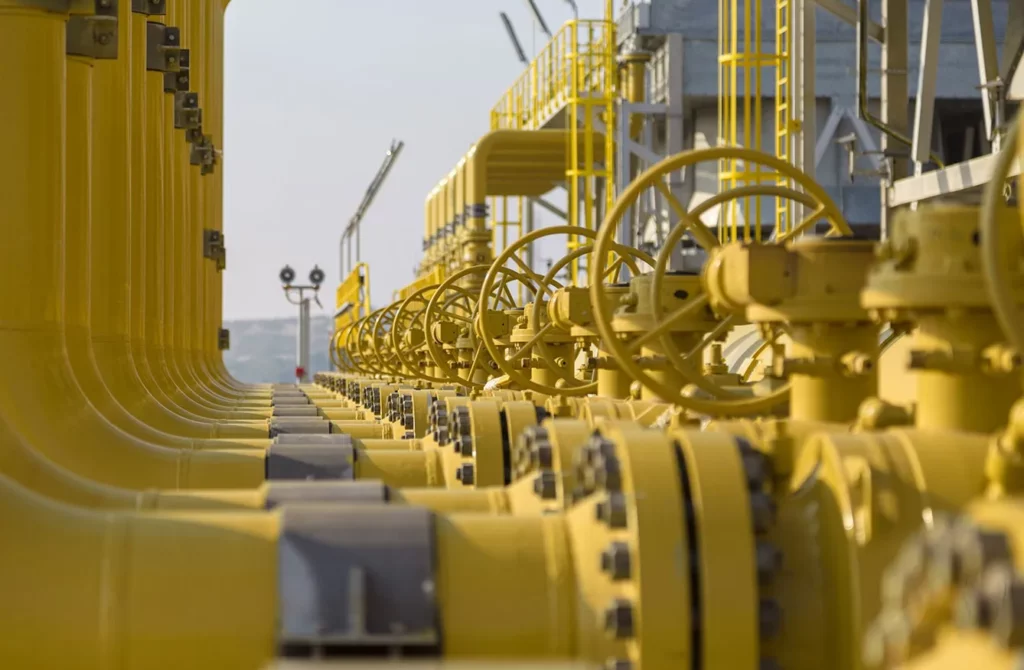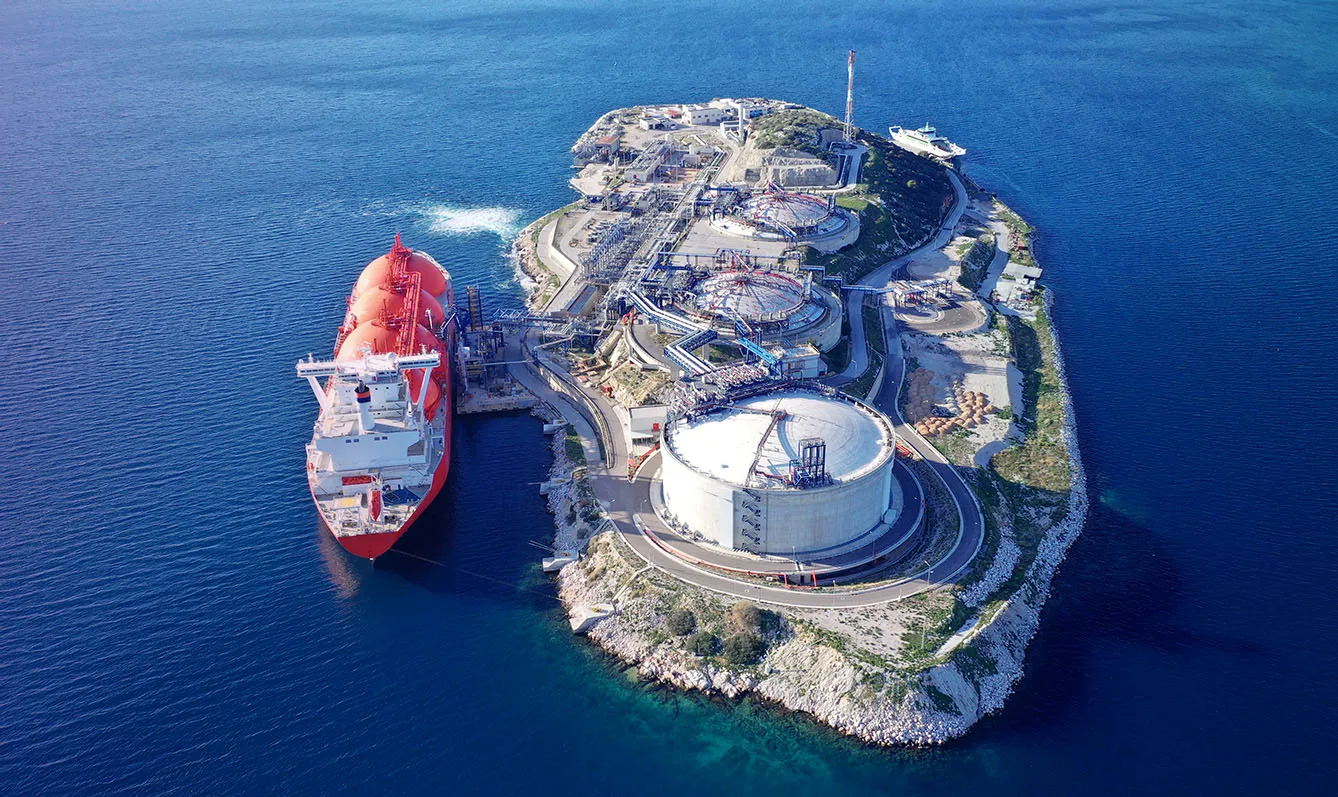Days before Russia’s invasion of Ukraine, in February 2022, EU’s gas deliveries were almost business as usual, with as much as 38% of Europe’s gas flowing in from Russia in 2021, according to Bruegel, a research organization. While some countries, such as Poland and Lithuania, to name a few, have been consistently trying to limit their dependency on Russian gas, others, despite talks about diversification, are still lagging significantly behind.
In search of quick solutions
In the case of Bulgaria, Russia accounted for as much as 80% of its gas imports at the time the war in Ukraine broke out. Initially somewhat doubtful about Russia’s intent to severe gas exports, European leaders had to look for quick solutions, with Poland and Bulgaria being the first two EU countries to be cut off by Russia in April 2022. To secure its energy independence, Bulgaria looked south to its neighbor, Greece, where two solutions emerged.
Located 40 kilometers off Athens, Revithoussa is an islet that is not popular with tourists. And yet, as Bulgaria was looking for alternatives to Russian gas imports, many in the country quickly learned the name of the islet, home to Greece’s sole liquified natural gas terminal. After a series of upgrades, the facility in Revithoussa, operated by the Public Gas Corporation of Greece, has the capacity to store some 6.9 billion cubic meters of gas annually, which is good news for countries struggling to wean off from Russian gas. With that in mind, beginning in 2022, the Revithoussa terminal offered a helping hand not only to Greece but also to countries across southern Europe.
According to numbers provided by Revithoussa’s operator, LNG deliveries to the terminal were up 63% already by August 2022, compared to 2021, with the total of cargos increasing by a whopping 154 pct in the same period as countries like Bulgaria were increasingly relying on securing liquified natural gas from Revithoussa. And while the mild winter combined with new provisions made to secure alternative gas imports are making Bulgarians far less stressed about heating up their homes this winter, Bulgaria continues to rely on Revithoussa for part of its gas imports.
Greece is stepping up to the plate
Meanwhile, with LNG demand here to stay, Greece is looking to do more in gas diversification with several new projects for floating storage and regasification units (FSRU) in the pipeline. Expected to start operations by January 2024, the Alexandroupolis offshore LNG terminal will have an annual regasification capacity of 5,5 billion cubic meters, with Bulgaria and countries located further north lining up to use the new facility. Alexandroupolis’ strategic location in northeastern Greece proves beneficial with a second FSRU, with roughly the same technical capacity, expected to commence operations in 2025.
Looking to play a key transit role in gas headed for Europe, Greece has announced other FSRU projects off the city of Volos (with an annual regasification capacity of 5.2 billion cubic meters), which once delivered will carry gas to Bulgaria, North Macedonia, Romania, Albania, Italy and others. FSRU projects are also in the works off Corinth, a 340 million investment to be developed by Motor Oil near Athens, and off Thessaloniki, Greece’s second-largest city. The FSRU project off Thessaloniki, a joint venture by Italy’s Edison and Helleniq Energy, once delivered reportedly by 2025, will have the capacity to store 170,000 cubic meters of gas and deliver up to 20 million cubic meters daily.
But Bulgaria has been benefitting from its proximity to Greece not only due to the country’s now-invaluable LNG terminal projects. In the fall of 2022, Bulgarians learned another important word for their gas independence: interconnector.


Already in 2009, work commenced on a 183-kilometre gas interconnector linking Greece and Bulgaria and allowing for the delivery to Bulgaria of Azeri gas flowing to Europe through the Trans-Adriatic Pipeline. But severely delayed, according to some, to keep Bulgaria dependent on Russian gas, the interconnector finally began operations only on 1 October 2022.
With the gas transmission networks of Greece and Bulgaria now connected, a 253 EUR million investment, as much as 3 billion cubic meters of gas can be carried through the new pipeline, with plans for increasing the interconnector’s capacity to 5 billion cubic meters as early as 2025, an important upgrade which can benefit even countries such as Moldova and Ukraine. Meanwhile, in the first full year of operation of the facility, over 16.4 million MWh, or a little over 1,5 billion cubic meters, have been transported through the pipeline, with gas from Azerbaijan now covering some 30% of Bulgaria’s needs.
The supply of natural gas from Azerbaijan to Bulgaria will break the tight grip of Russian gas on the region,” Greek Prime Minister Kyriakos Mitsotakis said at the official opening ceremony in Sofia in October 2022. “This is not just an energy line but a link between countries sharing the same values. It is an expression of our confidence that we will tackle challenges that are significant. European solidarity will be placed above national interests.”







